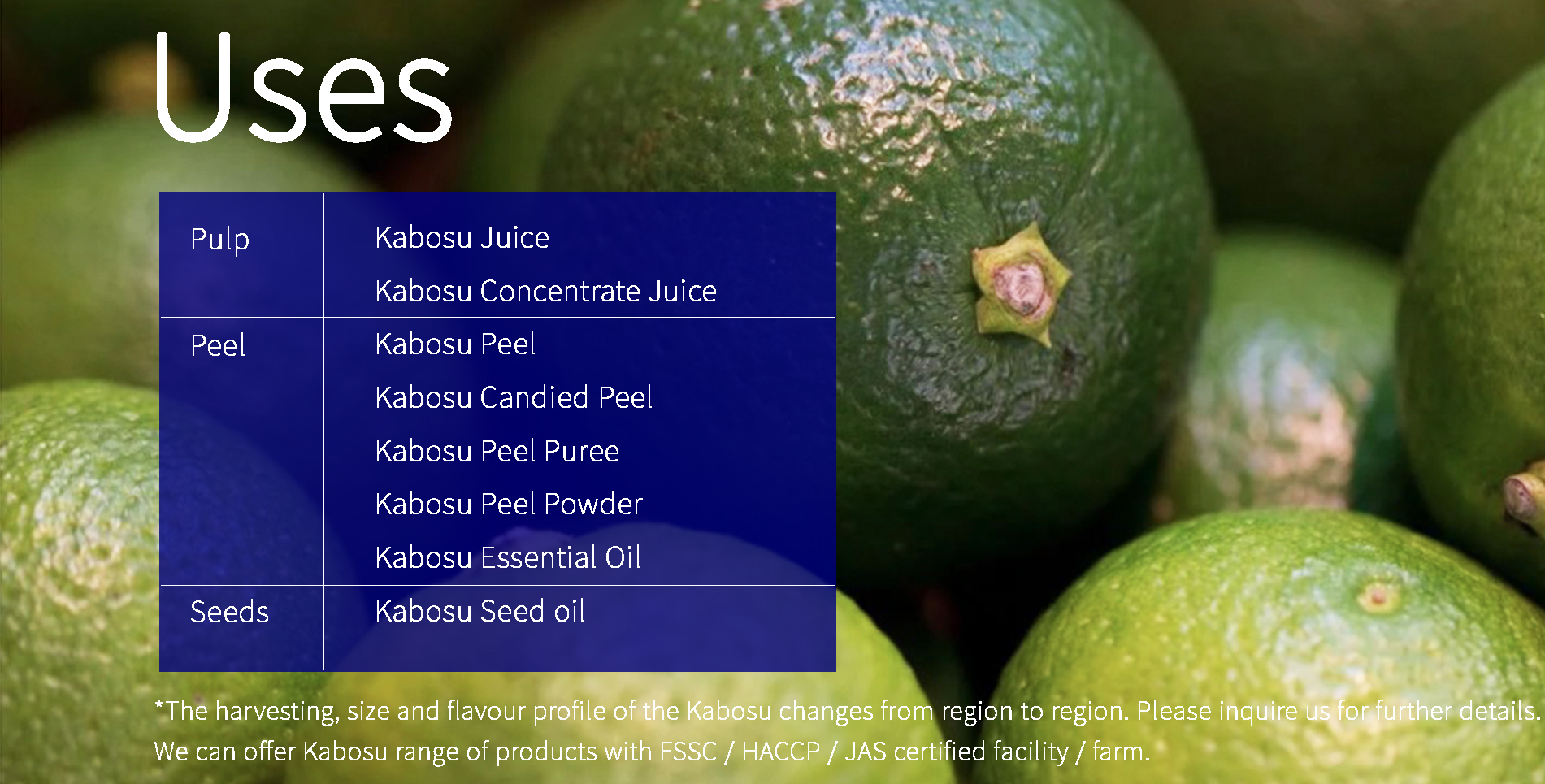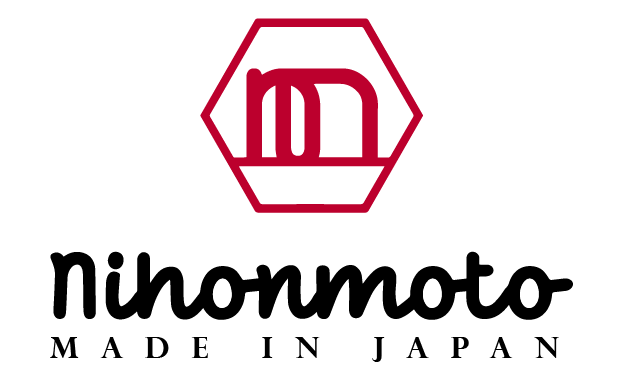- Home
- About Japan Fruits
- Yuzu Fruit
- Kabuso Fruit
- Sudachi Fruit
- Home
- About Japan Fruits
- Yuzu Fruit
- Kabuso Fruit
- Sudachi Fruit

Kabosu is believed to have originated in Japan, where it has been cultivated for centuries. It is thought to be a hybrid between the sour orange and another citrus variety. This hybridization likely occurred naturally, leading to the unique characteristics of kabosu. It is closely related to Yuzu and often used in a similar way. Kabosu is particularly associated with Oita Prefecture, where it is not just a fruit but a cultural icon, a staple of local cuisine and culture. It is also celebrated in festivals. In recent years, Kabosu has seen a rise in interest both in Japan and internationally. Chefs and food lovers appreciate its unique flavour and it has begun to appear in gourmet products, cocktails and international cuisine.
• Size: Typically measures about 2 to 3 inches in diameter. Smaller than common citrus fruits like oranges or grapefruits.
• Shape: Japanese kabosu fruit is generally round to slightly oval.
• Color: Yellowish-green hue when ripe. And typically a bright green when it is unripe.
• Skin Texture: The skin is smooth and glossy and is often slightly dimpled, giving it a subtle texture. Overall, it feels firm and pleasant to the touch. The outer layer is relatively thin, making it easy to peel.
• Stem and Leaf: Stem is typically short and sturdy at the top of the fruit. It is typically green or brown. A single leaf or a pair of leaves may be attached near the stem. Shape is lanceolate, elongated, and can range from about 5 to 10 centimeters long, tapering to a point.
• Seeds: The seeds are embedded within the pulp. Typically contains a moderate number of seeds, usually ranging from 1 to 10 seeds per fruit.


• Size: Typically measures about 2 to 3 inches in diameter. Smaller than common citrus fruits like oranges or grapefruits.
• Shape: Japanese kabosu fruit is generally round to slightly oval.
• Color: Yellowish-green hue when ripe. And typically a bright green when it is unripe.
• Skin Texture: The skin is smooth and glossy and is often slightly dimpled, giving it a subtle texture. Overall, it feels firm and pleasant to the touch. The outer layer is relatively thin, making it easy to peel.
• Stem and Leaf: Stem is typically short and sturdy at the top of the fruit. It is typically green or brown. A single leaf or a pair of leaves may be attached near the stem. Shape is lanceolate, elongated, and can range from about 5 to 10 centimeters long, tapering to a point.
• Seeds: The seeds are embedded within the pulp. Typically contains a moderate number of seeds, usually ranging from 1 to 10 seeds per fruit.

• Flowering Season: Typically flowers in late spring, from April to May, depending on the local climate and growing conditions. In warmer regions, flowering may occur earlier in the spring.
• Appearance- Small, white or pale yellow. The flowers have five petals and a prominent central column of stamens.
• Pollination – Kabosu flowers are generally self-pollinating, meaning they can produce fruit from the pollen of their own flowers. However, cross-pollination with other citrus varieties can occur and may contribute to better fruit set. Pollination is often assisted by bees and other insects that visit the flowers to collect nectar.
• Fruit Growth – The flowers give way to the formation of small green fruits which gradually mature.
• Care Tips – Ensuring adequate water, sunlight, and soil conditions—can help produce a better fruit yield.
Late summer to early autumn! The harvest season for Kabosu is usually between August and October. The fruit is picked when it has developed its characteristic greenish-yellow color and aromatic flavor. Harvesting at the right time ensures the best taste and quality for culinary use.


• Tartness, Kabosu has a tangy flavor that is more tart than sweet.
• Citrusy Notes are similar to lemon and lime but more complex.
• Milder bitterness, unlike some other citrus fruits which balances well with its tartness.
• The aroma of the fruit is a strong, aromatic scent, which can elevate the flavor experience.
• Fully ripe kabosu will have a more developed flavor.
• Tartness, Kabosu has a tangy flavor that is more tart than sweet.
• Citrusy Notes are similar to lemon and lime but more complex.
• Milder bitterness, unlike some other citrus fruits which balances well with its tartness.
• The aroma of the fruit is a strong, aromatic scent, which can elevate the flavor experience.
• Fully ripe kabosu will have a more developed flavor.

• Citrusy Freshness, Kabosu has a bright, zesty, fresh and uplifting scent due to Limonene Compound.
• Floral Undertones, Linalool compound adds a subtle floral and slightly spicy note to the aroma.
• Herbaceous Nuances comes from α-Pinene and β-Pinene adding depth to the fragrance.
• Kabosu gets its sweet, fruity scent from Octanal compound enhancing the aroma’s richness.
• Another compound that imparts fruity scent is Citral. Comprising both geranial and neral isomers, it adds brightness and a sharp citrus scent.

• Citrusy Freshness, Kabosu has a bright, zesty, fresh and uplifting scent due to Limonene Compound.
• Floral Undertones, Linalool compound adds a subtle floral and slightly spicy note to the aroma.
• Herbaceous Nuances comes from α-Pinene and β-Pinene adding depth to the fragrance.
• Kabosu gets its sweet, fruity scent from Octanal compound enhancing the aroma’s richness.
• Another compound that imparts fruity scent is Citral. Comprising both geranial and neral isomers, it adds brightness and a sharp citrus scent.


